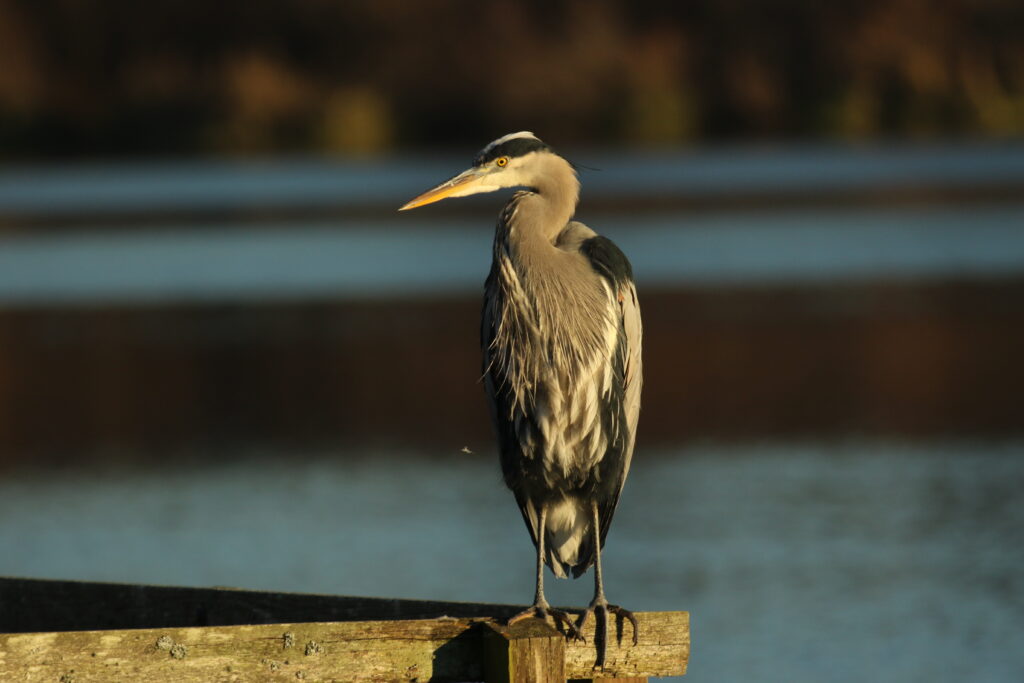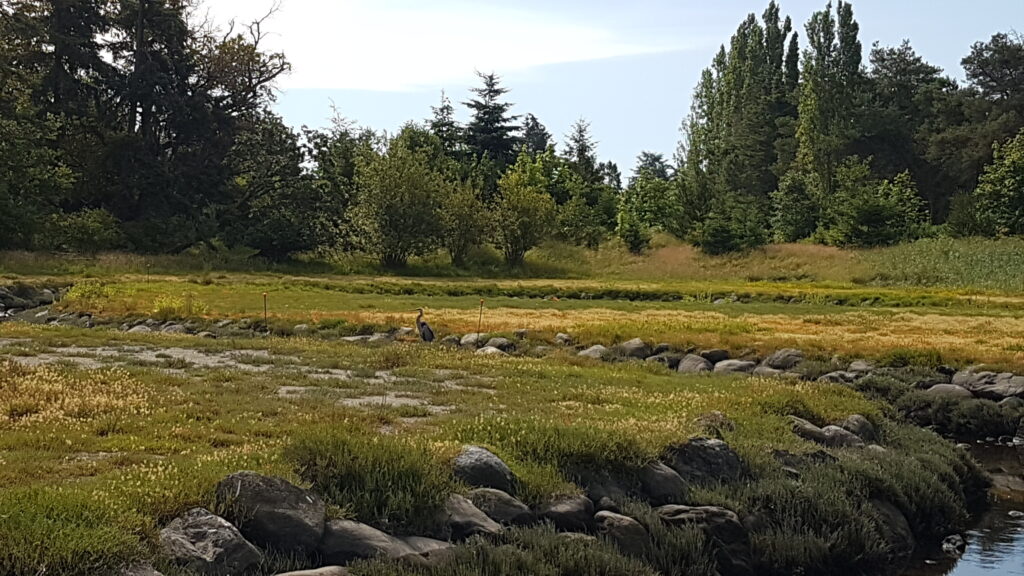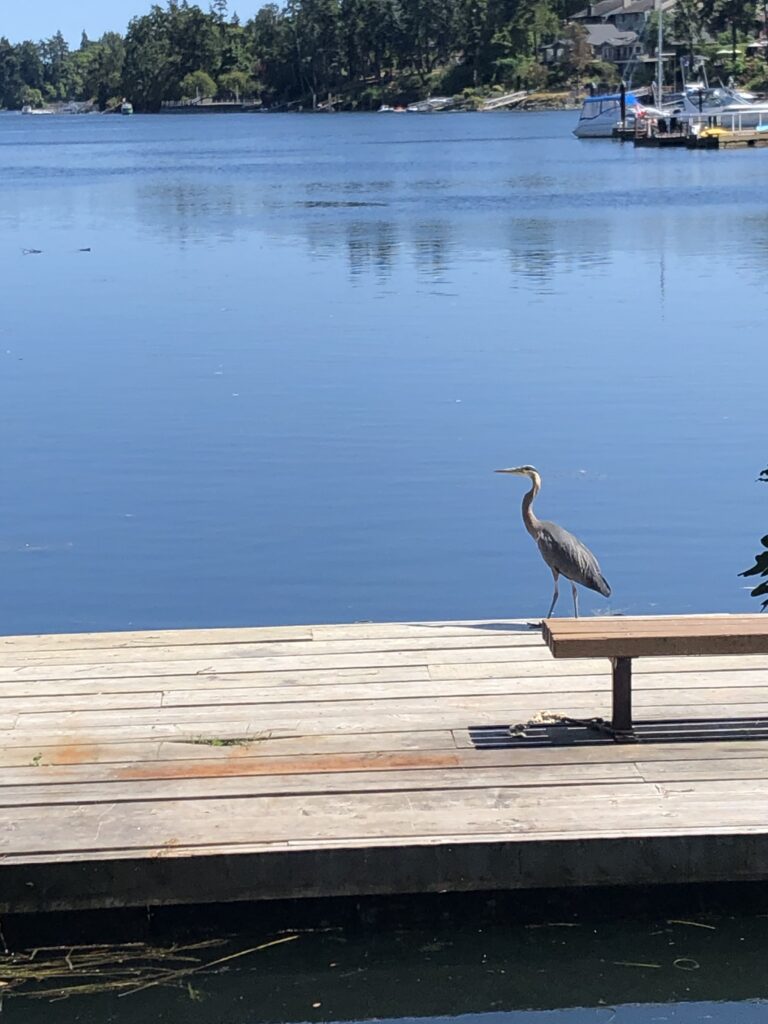Great Blue Heron (Ardea herodias)

The great blue heron is a large wading bird that lives near wetlands and shorelines throughout North and Central America. They have long legs, an S-shaped neck, and blue-grey feathers, with a plume of long white feathers on the lower neck. Great blue herons are partial migrants, which means that some individuals migrate, while others stay in the same place year-round. Most of the great blue herons in BC are not migratory, due to the mild winter temperatures.

Great blue herons feed mainly on fish, but will also eat shrimp, crabs, snakes, birds, and small mammals. They catch their prey by standing still or walking slowly through the water, and then striking with their beak when their prey comes within reach. Adult blue herons have very few predators, but will occasionally be attacked by large birds of prey such as eagles.

Great blue herons nest in large colonies called heronries, which can contain hundreds of nests. The nests are large platforms made of sticks, usually built near the top of a tree. Herons build new nests each year, but may take over an old nest if one is available. Nesting herons are very easily disturbed by humans, and may abandon their eggs if people come too close to the nest. Because of this, and because their population is declining, great blue herons are listed as vulnerable species in BC and their nesting sites are protected year-round.
For more information, visit the BC Breeding Birds Atlas or the BC Species and Ecosystems Explorer.


